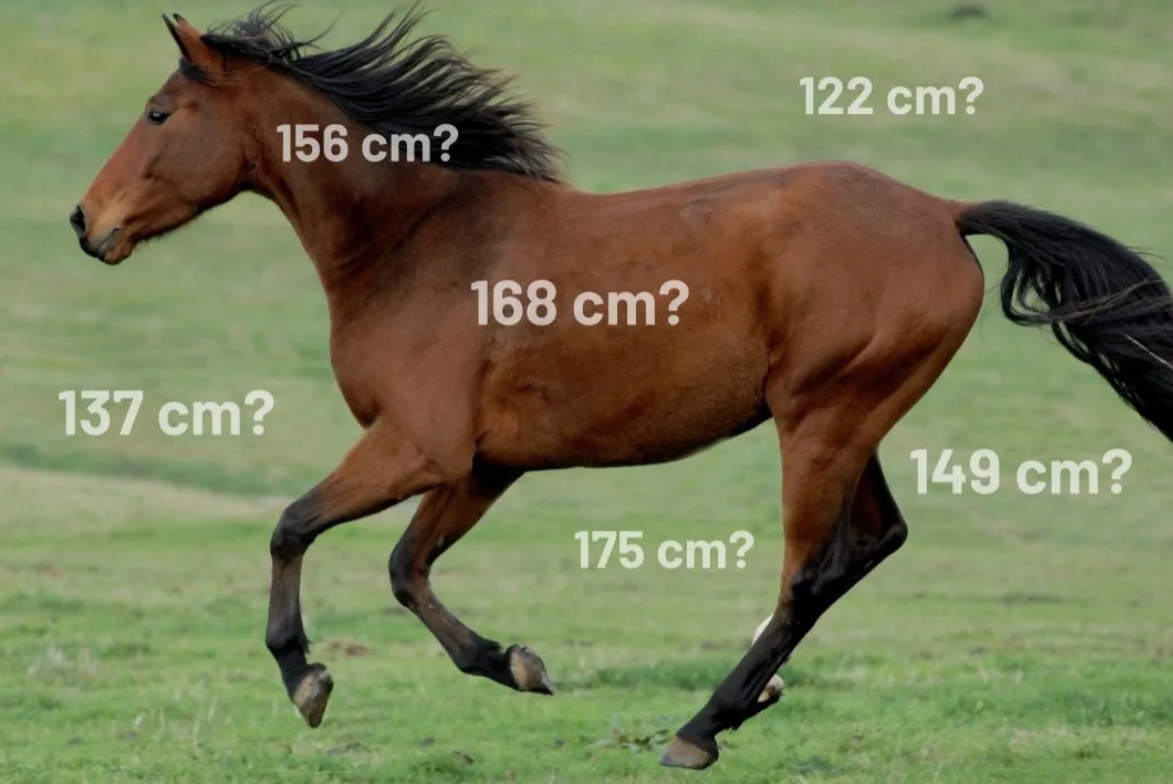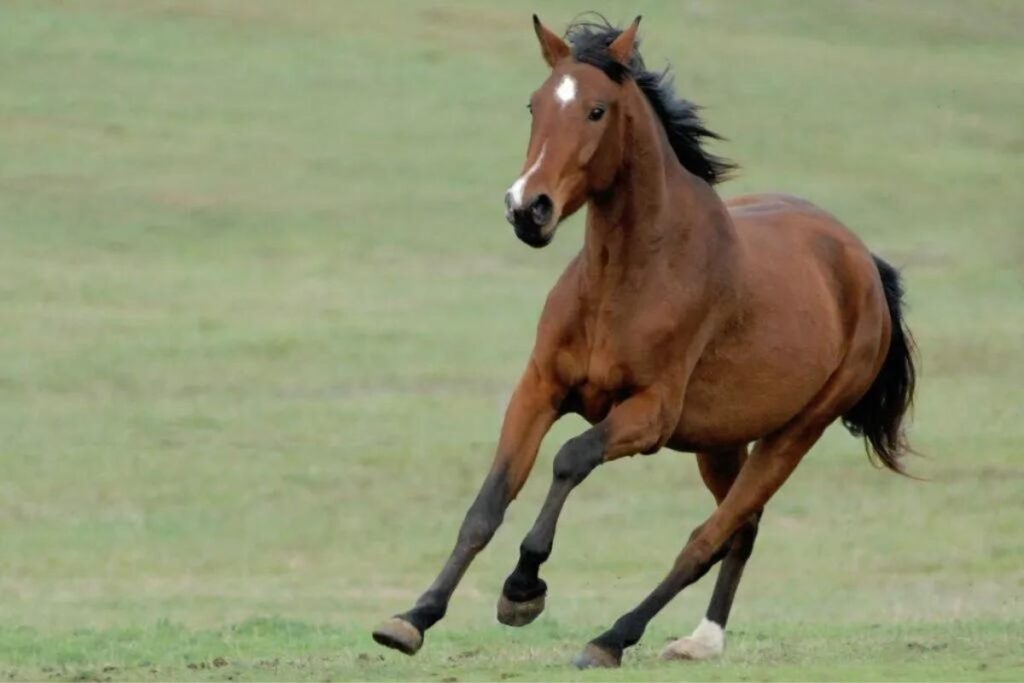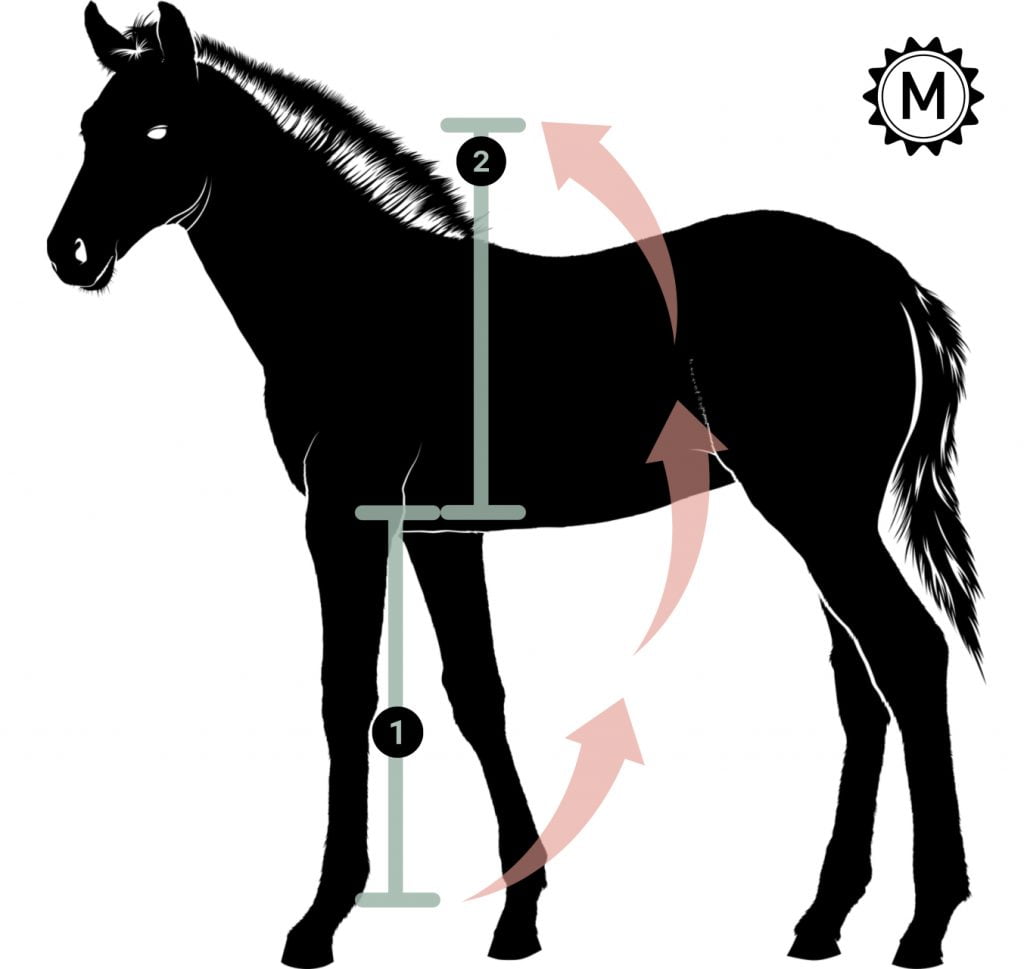Menu

Did you know when you bought your young horse – how tall it would end up being? Then maybe you know what it is like to stand with a young horse of 150 cm and not know if it will be plus or minus 170 cm as an adult. Or maybe you have a foal that you do not know will be a category 2 or a category 1 pony? We know the problem and have found a few methods you can use to calculate the height of your future, full-grown horse.
You may also like to read: Step by step: How to ensure a good foaling
The more the horse is fed, the more it grows. In young warm-blooded horses, it can cause them to reach their maximum weight already at the age of 2-3 years. This is the conclusion by a number of Danish researchers (Staun et al., 1989). Here, however, it is important to know that it is not necessarily good for the horse to achieve the maximum height. The most important thing is that it follows a healthy growth curve, as explained by Jørgen Finderup Consultant at LandbrugsInfo.dk.
When a foal is born, its height at the withers is basically the best indicator of how tall it will be as a fully grown horse. But there are also many other - and perhaps more accurate - ways to calculate it.

Consultant at LandbrugsInfo.dk, Jørgen Finderup explains that a 1-year-old horse will have reached 60% of its full-grown weight, 90% of its full-grown height and 95% of its full-grown bone growth. However, it depends to a large extent on the breed of the horse. At the same time as the feeding of the horse as mentioned is of great importance.
However, if you want to try and put all horses in the same category, you can choose to multiply the horse's whither measurements when it is 1 year old by 1.1. Then you know roughly how tall it will be as a full-grown horse. According to this method, a horse that is 148 cm as a 1-year-old will thus become 162-163 cm as an adult.
Professor IN veterinary science at KVL, Henning Staun, as well as a number of other researchers, calculated back in 1995 the connection between horses' leg length as a foal and their height as a young horses. What the calculations show, you can see below.
| The lenght of the leg at 0,5 years | The whither measurements at 2,5 years |
| 80-85 cm | Ca. 160 cm |
| 86-88 cm | Ca. 164 cm |
| 89-93 cm | Ca. 170 cm |
You can also use what is called a gypsy measurement to see how tall your horse will end up being. Actually, it is based on the same measurement method as above, but here you just get a more accurate result. It is also important with this method that you measure your horse as close to its 1-year birthday as possible. You will need a string and maybe an extra helping hand.
1. Find a leash and hold the end of it just off the foal's elbow on the foreleg with your left hand (or have someone else hold it for you).
2. While holding the end of the leash to the center of the foal's elbow, guide the leash down towards the code. Place your fingers with your right hand around the leash just off the lower part of the horse's code joint.
3. Now move the part of the leash that you hold with your right hand next to the horse's code, 180 degrees around and straight up in the air, so that it goes up above the horse's lance mark.
4. Now you can use a tape measure or a bar gauge to measure from the ground and up to the point where you are holding the string. It's your foal's coming height.
We have made an illustration that can hopefully help you understand how to do it.

Staun, H., Larsen, A.E., Schougaard, H., Fræhr, E. & Clausen, E. (1995). Opdræt af hingsteplage. Forskningsrapport nr. 38, Statens Husdyrbrugsforsøg.
Finderup, J., "How to measure growth and correct developement" Landbrugsinfo